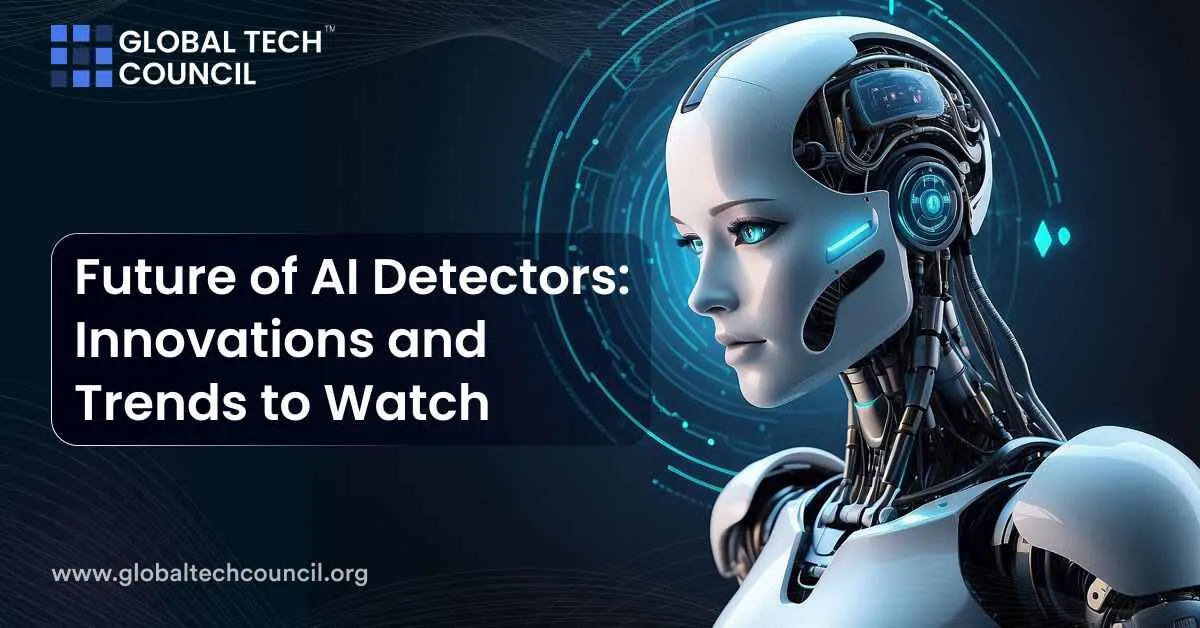
Generative AI has taken the internet by storm in the past 2-3 years. Tools like ChatGPT, Gemini, Llama, DALL-E, and Copilot can help users with almost every query. They can create desired content by simply providing the prompt to these tools. However, this single-click step for content creation isn’t appreciated in most settings, including academics and web content creation.
They require original work created through human minds. To combat the issue, AI detection tools and software have been designed. These tools are trained on similar algorithms used in generative AI for accurate detection. However, as technology continues to evolve, AI detectors also improve in distinguishing between human-generated and machine-generated content.
In the upcoming future, we can expect more sophisticated AI checkers that will offer various options and features apart from identifying AI-generated content.
These tools have continually been upgraded to bring innovations to the field. Let’s explore the future of AI detectors by learning about their current innovations and trends.
Emerging Trends in AI Detection
-
Real-Time Detection
Tools and software that take long hours to generate results aren’t feasible options for the majority of the users. The digital world operates at a rapid pace, and so do the AI detectors. They should provide instant results instead of keeping them waiting for results.
The continuous updates and innovations offer quick and real-time results. Users don’t have to wait for a longer period to identify generative AI. Instead, an AI checker analyzes the query in real-time and immediately flags AI patterns.
The immediate feedback of AI detection offers improved user experience and engagement. Resultantly, the rapid results enable immediate responses to potential risks as a result of AI-generated content.
-
Cross-Language Detection
Digitalization has transformed the world into a global village that isn’t restricted to a single language. Website owners have multiple-language versions of their sites, and content creators and marketers publish content in various languages.
However, AI detectors currently offer scanning for a few popular languages. The upcoming future updates are on their way to detect AI generated content in almost every language. These innovative algorithms will allow the identification of AI-generated content in a diverse range of linguistic contexts.
-
Enhanced Detection Algorithms
As we know, AI detection technology is in its nascent stages. This means the algorithms and patterns aren’t fully learned and are still being trained for precision. Therefore, it is normal for them to give false positive and negative results.
However, innovations in AI detection algorithms are finding their way to improve the quality of results. This means AI checkers that aren’t able to give 100% accurate results for every query and fail to detect more often would be upgraded.
This helps them catch machine-generated content better. Hence as AI detection models will become more sophisticated the amount of false positive and false negative results will decrease.
-
Explainability
AI content detectors are now available and follow the white-and-black identification process. This means they only flag the content as AI-generated or human-crafted. But in the future, we might see technological advancements and innovations that can tell the reason behind them.
Explainable artificial intelligence (XAI) is a new innovation that will soon be in practice. By capitalizing on this cutting-edge technology, AI checkers will be able to give appropriate and clear explanations of how they identify AI-generated content.
When users are provided with insights into why a piece of content is flagged as AI-generated, they will better understand the detection process and help build trust and accountability for technology.
-
Continuous Learning and Adaptation
As generative AI constantly evolves, with more accurate results and resemblance to natural language, AI checkers are also being upgraded to cope with cutting-edge AI content creation tools and detection techniques on the continuous path of learning and adaptation.
This includes harnessing machine learning models that can update themselves based on new data and emerging threats. As a result, future AI detectors might be able to self-improve, which will take detection to a whole new level.
Moreover, by leveraging real-time data, they can enhance their detection capabilities. The continuous learning approach and self-learning improvements will ensure that AI checkers can keep up with the ever-changing AI technology.
-
Ethical Considerations and Bias Mitigation
AI patterns, whether for content generation or detection, run on pre-learned patterns. This means they deliver results based on data interpreted by humans, and these questions are the standardization.
The more innovative approaches will be practiced with ethical considerations in mind. Ethical considerations will minimize biased and prejudiced results. Consequently, the occurrence of false positive results will decrease, which could unfairly impact users.
Conclusion
Undoubtedly, generative AI is assisting with the enormous need for content creation. However, the value of original thoughts and efforts can’t be replaced. Therefore, AI checkers are used to avoid the propagation of AI content. These tools can easily differentiate between human and machine-generated content. However, AI content detectors are still not 100% accurate. Advancements and improvements are being made to provide more precise and reliable results. Moreover, technological innovations have also been carried out to include various options and capabilities. In the future, we can expect more advanced features like integration with other platforms, Explainable AI, source identification, and more adaptations in detecting AI-generated visual content.